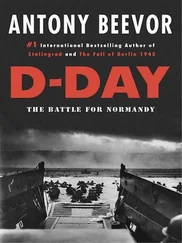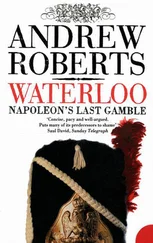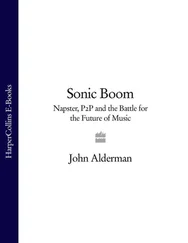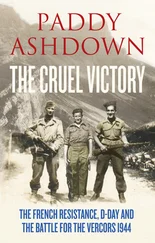Whether it was from the sudden and unexpected appearance of a Corps so near them, which must have seemed as starting out of the ground, or the tremendously heavy fire we threw into them, La Garde, who had never before failed in an attack, suddenly stopped. Those from a distance and more who could see the affair, tell us that the effect of our fire seemed to force the head of the column bodily back. 6
Meanwhile, field brigades such as that of Captain Napier fired grapeshot at ranges of 200 yards and less, and the troops of the 3rd Chasseurs who still wanted to close with the enemy found that they had to climb over the corpses of their fallen comrades in order to do so. The assault petered out. Superb inter-service coordination between the British infantry and artillery had been the key to the repulse of the 3rd Chasseurs.
After ten minutes or so of further carnage, Wellington sensed the correct moment to order the Foot Guards to fix their bayonets and charge, whereupon the 3rd Chasseurs were chased off the slopes and back to Hougoumont and beyond. Ensign Gronow took part in this engagement, recalling how:
We rushed on with fixed bayonets and that hearty ‘hurrah’ peculiar to British soldiers. It appeared that our men, deliberately and with calculation, singled out their victims, for as they came upon the Imperial Guard our line broke, and the fighting became irregular. The impetuosity of our men seemed almost to paralyse their enemies: I witnessed several of the Imperial Guard who were run through the body apparently without any resistance on their parts. I observed a big Welshman of the name of Hughes, who was six feet seven inches in height, run through with his bayonet and knock down with the butt-end of his firelock, I should think a dozen at least of his opponents. 7
So many British troops followed them down that Napier’s battery was forced to stop firing altogether. Soon they had to break off their pursuit and turn back, however, because the last battalion of the Middle Guard, the 4th Chasseurs, could now be seen advancing towards the battered but still unbroken Anglo-Allied line. This truly was Napoleon’s last throw.
Facing the veterans of the Middle Guard were a hodgepodge of Anglo-Allied units. Some — like Major-General Frederick Adam’s brigade on the left flank of the enemy — were fresh, although others — such as Halkett’s brigade and the Foot Guards — were badly depleted. To complete the Middle Guard’s sense of utter isolation, the 3rd Hanoverian brigade actually debouched from Hougoumont and started to fire into their rear. It was Colonel Sir John Colborne who dealt the Middle Guard its final coup de grâce when he brought up his battalion of the 52nd Light Infantry to its left flank and fired a withering volley into the French ranks. Once the rest of Adam’s brigade had followed this up with a bayonet charge, the Guard broke and ran.
Wellington once again sensed the ideal moment. He snapped his telescope shut, rode to the crest of the ridge, took off his hat and waved it to indicate a general advance across the entire battlefront to mop up any further resistance. The exact words he used at that moment are disputed, but are often quoted as: ‘Go forward, boys, and secure your victory.’
The cavalry brigades of Vivian and Vandeleur which Wellington had hitherto used sparingly — Vandeleur to extricate the Union Brigade, for example — were also then finally unleashed to break through any places where the French might attempt to stand and resist. Sir Augustus Frazer recalled two days later what it had been like fighting in the dwindling twilight:
I have seen nothing like that moment, the sky literally darkened with smoke, the sun just going down, and which till then had not for some hours broken through the gloom of a dull day, the indescribable shouts of thousands, where it was impossible to distinguish between friend and foe. Every man’s arm seemed to be raised against that of every other. Suddenly, after the mingled mass had ebbed and flowed, the enemy began to yield, and cheerings and English huzzas announced that the day must be ours. 8
It was at around 8 p.m. that the cry went up through the French ranks, ‘ La Garde recule!’, something that had never happened before in the eleven-year history of the crème de la crème of the Grande Armée. It could mean only one thing: that the battle was irretrievably lost, and the only option now left was to throw down one’s musket and flee. The cry ‘ Sauve qui peut!’ quickly replaced ‘ La Garde recule!’, as the French army disintegrated before Napoleon’s eyes.
The Emperor bravely attempted to rescue the situation at La Haye Sainte by ordering the three Guards units still under his control — the second battalions of the 1st Chasseurs, 2nd Chasseurs and 2nd Grenadiers, under Generals Cambronne, Christiani and Roguet — to form three squares a hundred yards from the farm house, with their right almost reaching the Charleroi road. These initially withstood Vivian’s hussars, but then had to contend with both British infantry musketry and the horrific grapeshot fire of both Brevet-Major Whinyates’ and Lieutenant-Colonel Gardiner’s horse artillery troops and a field brigade under Brevet-Major Rogers, all firing at only about sixty yards’ range.
Almost impregnable to cavalry, squares are nonetheless highly vulnerable to infantry and artillery due to their highly compact nature and the paucity of muskets that can be brought to bear on any one spot, and so the carnage was terrific. After dreadful punishment, the Guard were ordered to fall back to La Belle Alliance by the Emperor, who rode off with some mounted chasseurs to try to find another position from which to rally his stricken forces, deciding upon Genappe.
It was during the Guards’ retreat that General Cambronne was asked whether he would surrender, to which he reputedly merely answered: ‘Merde!’ A myth was soon created that he had in fact replied: ‘La Garde meurt, elle ne se rend pas.’ (‘The Guard dies, it does not surrender.’) By the time the units reached La Belle Alliance their hitherto admirable order had collapsed. At this point, the Guard neither died nor surrendered; it simply ran, just like the rest of Napoleon’s army.
Lobau’s troops managed to protect the fleeing Armée du Nord as it swarmed back down the Charleroi road, whence it had come in such high expectations the previous day. The track itself was torn up by the ceaseless pounding of Prussian roundshot, fired from the by now re-recaptured village of Plancenoit (where General Duhesme was killed). Meanwhile the Prussian cavalry gave murderous chase, taking every advantage to revenge themselves on the men who had devastated their Fatherland nine years before during the Jena campaign.
Frenchmen were being lanced in the back by Prussian cavalry for as long as there was still daylight enough for the uhlans to carry out their long-awaited work of retribution. Their methodical vengeance helped turn a devastating and decisive defeat for France into an utter rout. Sergeant-Major Cotton of the 7th Hussars recorded: ‘That the French in their flight from Waterloo were unnecessarily butchered during many hours by the exasperated Prussians, is a fact, which I can more easily explain than justify.’ 9
In the course of the rout some terrible things happened on the Allied side, too, as when Captain Mercer’s horse artillery battery came under heavy enfilading ‘friendly’ fire from a Prussian battery, forcing Mercer to break off his pursuit of the French; the bombardment disabled his guns and killed no fewer than 140 of his 200 horses.
Crying, ‘Come and see a Marshal of France die!’, Ney put himself at the head of a brigade which by then consisted of only two battalions. It was not too tempting an offer for a unit that belonged to Durutte’s division of d’Erlon’s corps, and so which had therefore seen plenty of fighting already, and the counterattack that Ney led soon petered out. As he explained to Joseph Fouché on 26 June: ‘As for myself, constantly with the rearguard which I followed on foot, having had all my horses killed under me, being worn out with fatigue, covered with contusions, and having no longer the strength to march, I owed my life to a corporal, who supported me on the road.’
Читать дальше
Конец ознакомительного отрывка
Купить книгу











